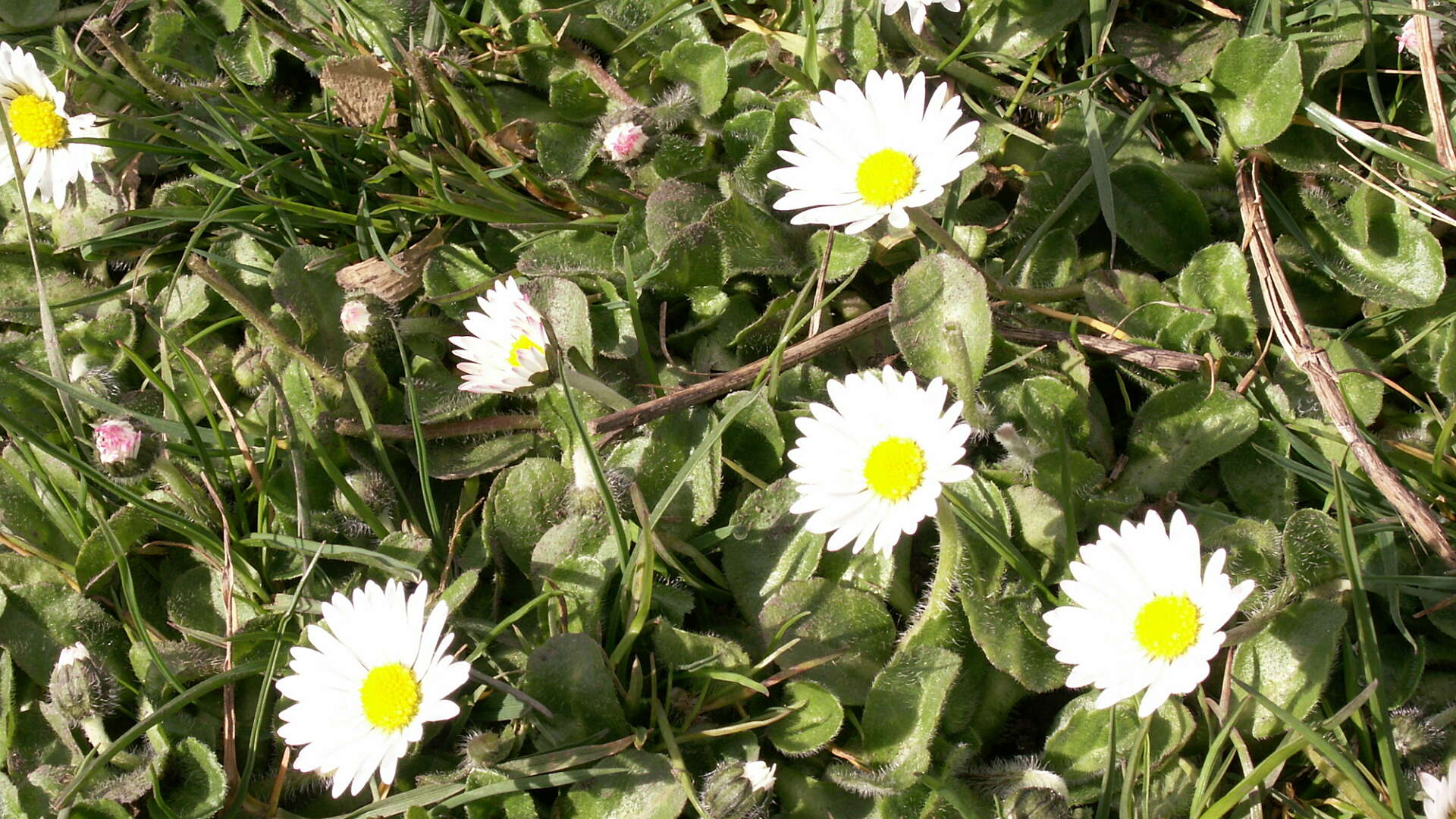Daisy

Other names
bachelor
Latin names
Bellis perennis L.
Weed Type
Perennial Broad-leaved Weeds
Where would I find Daisy?
It is common on lawns but is generally absent from shaded and disturbed habitats and robust vegetation. Nevertheless, in a seedbank survey in swede-turnip fields in Scotland in 1982, it was found in 32% of the fields sampled. It occurs on soils with a pH above 5.5 but prefers a pH of 7.0 to 8.0. Heavy infestations occur in lime-deficient lawns. It is recorded up to 3,000 ft in Britain.
There is considerable genetic variation in daisy. Several double flowered ornamental cultivars have been bred with flowers of white to purple. These are used as annual bedding for edging flowerbeds and often set seed. The shed seeds can result in volunteer seedlings emerging in the flowerbeds and invading lawns.
Daisy is used medicinally for external application to wounds. There is a long history of herbal use for relieving bruises and swellings. It has been used as a cure for mouth ulcers, toothache, bronchitis and rheumatism.
The foliage is unpalatable to insects due to an acrid secretion but the daisy can become infested with the potato tuber rot nematode, Ditylenchus destructor.
Biology
Daisy flowers from March to October, sometimes all year through the year if winters are mild, but mainly from April to June. The flowers are insect pollinated and self-compatible. Daisy is principally self-pollinated but some cross-pollination can occur. The flower heads close at night and in wet weather. Seed is shed from May onwards. The average seed number per flower head is 125. The mean seed number per plant is 1,300.
In laboratory studies in low and high light intensity and in darkness, seed germination was 100% in all conditions. In the field, seedlings emerge from March to October with peaks of emergence in June and September.
The leaves form a basal rosette. Short prostrate shoots develop from the axils of some leaves to form a small daisy patch. In winter the roots contain large amounts of the storage carbohydrate fructan. The rosette remains winter green and probably continues to grow during winter.
Does Daisy spread easily?
In cultivated soil, seeds did not persist beyond 4 years. However, seeds have been recorded in large numbers in the soil beneath pasture even when the plant was poorly represented in the vegetation cover.
The seeds are wind dispersed around the parent and may be carried by birds and ants. The seeds can be dispersed in the mud carried on shoes. In feeding studies with earthworms, 17% of offered seed was ingested and of these 59% was recovered in the worm cast soil. Germination levels increased from 83 to 97% following passage through the earthworms.
Daisy spreads vegetatively by means of short runner-like growths or stolons. These emerge from the axils of the first rosette leaves. Clonal patches occur on lawns but daisy spreads relatively slowly.
How to manage daisy organically
In lawns, small patches may be removed by hand using a knife or daisy grubber. The hole should be filled with a mixture of soil and grass seeds. Control is improved by promoting the growth of surrounding vegetation. Daisy does not do well in long grass because the leaves have very limited powers of elongation. The leaves are palatable to stock and are grazed when they grow more erect in tall grass.
Regular mowing of lawns to 2-3 cm will reduce but not prevent seed production. The type of mower and the flexibility of the flower stems will have an effect. An uneven surface will allow some flowers to escape decapitation.